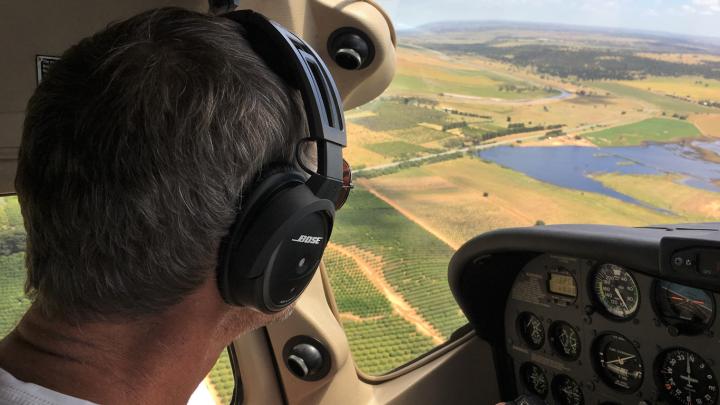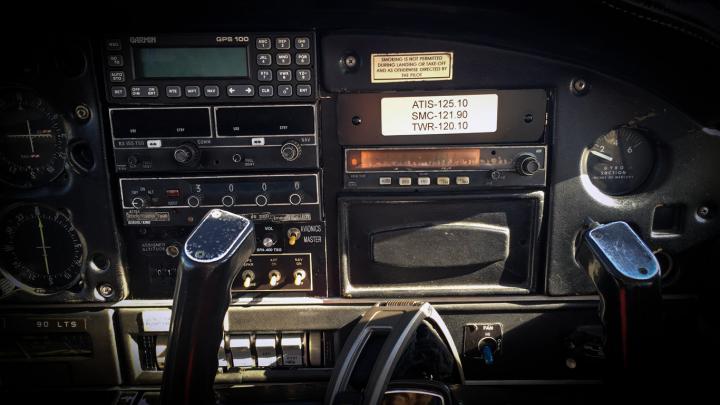Operations at non-controlled aerodromes
Our message 'Be heard, be seen, be safe' goes a long way towards keeping you out of trouble in the vicinity of a non-controlled aerodrome.
Just because there appears to be less traffic about doesn't mean you can relax your disciplines of maintaining high situational awareness.
A non-controlled aerodrome is one where air traffic control is not operating. This also applies to an aerodrome that would have ATC services but are unavailable at the time.
You can locate non-controlled aerodromes by reading your NOTAMs (don't even think about leaving home before checking the NOTAMs applicable to your flight).
Remember to include Head Office, FIR, and PRD NOTAMs in addition to your location briefing. These are a vital part of your pre-flight preparation.
Note: You have the ability to minimise the NOTAMs provided by using sub-FIR codes for the areas that you will be flying through. Watch the videos released by Airservices to help you through the logical sequence of thorough flight planning and execution of your intended flight.
Area frequency versus local frequency
There are huge safety benefits in the 'see and avoid' technique of traffic separation and selecting the correct frequency.
When departing or arriving at non-controlled aerodromes, you should monitor your radio and broadcast your intentions. Other tips include:
- When at or near a non-controlled aerodrome or in a Broadcast Area with a CTAF. This includes those assigned CTAF 126.7. Listen and broadcast as necessary on the published frequency.
- Use CTAF 126.7 when at or in the vicinity of non-controlled aerodromes marked on charts that don't have an assigned discrete frequency.
- when operating at aerodromes not depicted on aeronautical charts, pilots should monitor and broadcast their intentions on the relevant Area VHF.
If there's no published frequency, look to see if the aerodrome is marked on the Airservices chart. Always check before you go flying.
Operating with an unserviceable radio
Read AC 91-10 for advice on operating with an unserviceable radio at a non-controlled aerodrome:
AC 91-10 Operations in the vicinity of non-controlled aerodromes (PDF, 1.45 MB)
Part 91 of CASR allows for a 'no radio' arrival or departure in certain circumstances at non-controlled aerodromes where you need to use a radio.
Circuits
Familiarise yourself with correct circuit procedures at non-controlled aerodromes including AC-91-10.
Make sure you are entering and departing the circuit as you should be. While this is basic advice, many pilots flout the rules and choose the 'most convenient' route, to save time and fuel.
At some aerodromes there are important anomalies to be aware of.
For example, some aerodromes might have a right-hand circuit requirement. You can find more information about flight procedures in ERSA.
Multiple CTAFs sharing one frequency
During the Out-n-Back journey, the crew's route through far north Queensland included an overnight stop at the busy coastal town of Karumba.
Karumba has one of the country's most picturesque coastlines, which means air traffic in this area can get busy. This includes private, scenic and air transport flights in both helicopters and fixed wing aircraft.
In this area, there are multiple CTAFs near one another all sharing the same radio frequency: 126.7.
While on the ground and airborne, we hear numerous calls from pilots inbound or outbound at Normanton, Burketown, Karumba, Kowanyama and Pompuraaw.
All of these calls require careful attention to the location stated so we could determine which operations are of consequence to our flight.
Situational awareness
Lookout and listen for straight-in approaches and base leg joins when your ETAs are sounding similar.
It's all about situational awareness. Ask your passengers to also keep an eye out (they'll love help out and be your extra set of eyes).
Departures are just as important. Make sure you speak and give useful information in your radio call when you are airborne off your departure runway.
When talking direction, why not keep it simple and give a quadrant. You could say something like '... 2,000 ft, on climb 5,500 tracking north-east …'
If there is any potential traffic conflict, your call should initiate further communication to arrange separation.
Finish your radio call with your location. Many listening to their radios will often miss the first first few words of a call.
Finally, if you hear a jump plane way above you dropping passengers out the back door in rapid succession, listen out.
Talk to the jump pilot to let them know you're there. You may need to prepare for unscheduled sightseeing. Those brightly coloured chutes have a first-class ticket to a landing point very near your intended runway.
Wait until all the jumpers are safely on the ground and know where the jump plane is located before you do anything else.
Aircraft cockpit displaying radio frequencies
Golden rules of radio calls
Here are some tips and advice for making clear and direct radio calls during your trip.
Correct frequency, volume up
Sounds simple, but many of us can admit to selecting the wrong frequency or having the volume way down.
To make sure you're correct and loud, include the steps in your CLEAROFF check. When you get to 'radio' check for the right frequency and make sure the volume is up.
Read our section on 'area frequency versus local frequency'.
IMPAIR format
Think about what you're going to say before you transmit. Make you say it slow enough so everyone can understand what you are saying. Project your voice so that the words are clear.
Use the IMPAIR format to make clear calls. IMPAIR stands for:
- Ident: to whom am I speaking?
- Me: aircraft type and callsign
- Position: distance/bearing
- Altitude: in feet
- Intentions
- Request (if in CTA/CTR/ADIZ).
Too many calls
Try not to clog up the frequency with unnecessary radio calls. If you've made the recommended calls, we don't need to hear the life story of your circuit. You should always provide another update if there is a potential traffic conflict.
Listen carefully to other calls and assess from these whether you need to clarify your position to avoid conflict.
If you can see that an aircraft ahead of you is about to land, delay your call for a few seconds. This will help minimise any distractions for them as they land.
A word about wording
Pilots at many different locations will be able to hear broadcasts at non-controlled aerodromes or in class E or G airspace.
To help avoid confusion, commence your call with your location followed by the word 'traffic'. For example, 'Bundaberg traffic'.
Talking amongst yourselves
The Aeronautical Information Package (AIP) GEN 3.4 (4.1.5) states the use of air-to-air communication between pilots:
'In accordance with regional agreements, 123.45MHz is designated as the air-to-air VHF communications channel. Use of this channel will enable aircraft engaged in flights over remote and oceanic areas out of range of VHF ground stations and not in the vicinity of a non-controlled aerodrome depicted on a chart to exchange necessary operational information and to facilitate the resolution of operational problems.'
This means it's not a chat channel with mates.
Interpret the calls
Listen out for the position and the type of aircraft you hear inbound to the same location you're heading for.
Pilots of almost all aircraft are able to retrieve an ETA from their GPS.
Have a look at the runway layout in your ERSA. Look to see if there is a long backtrack involved in getting yourself off the runway. In this case, consider taking the pressure off yourself and offer to land second.
Don't just listen to radio calls: interpret them. Turn them into a visual picture for yourself of where that other aircraft is and the intention of its pilot.



